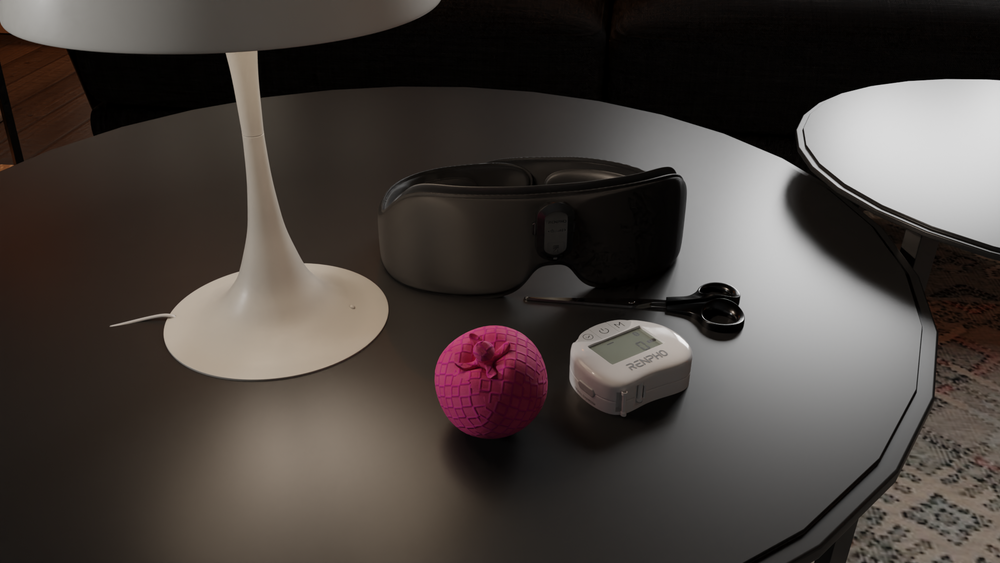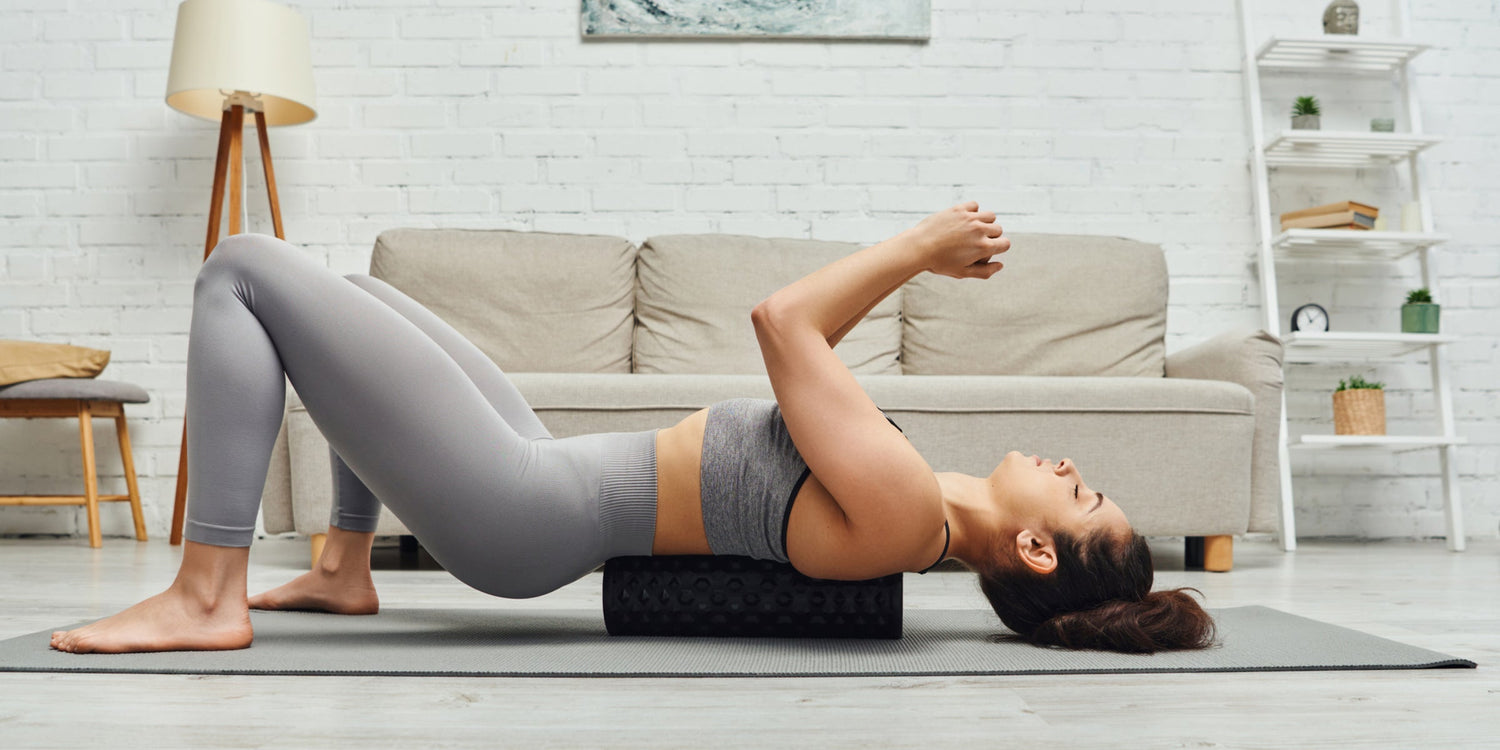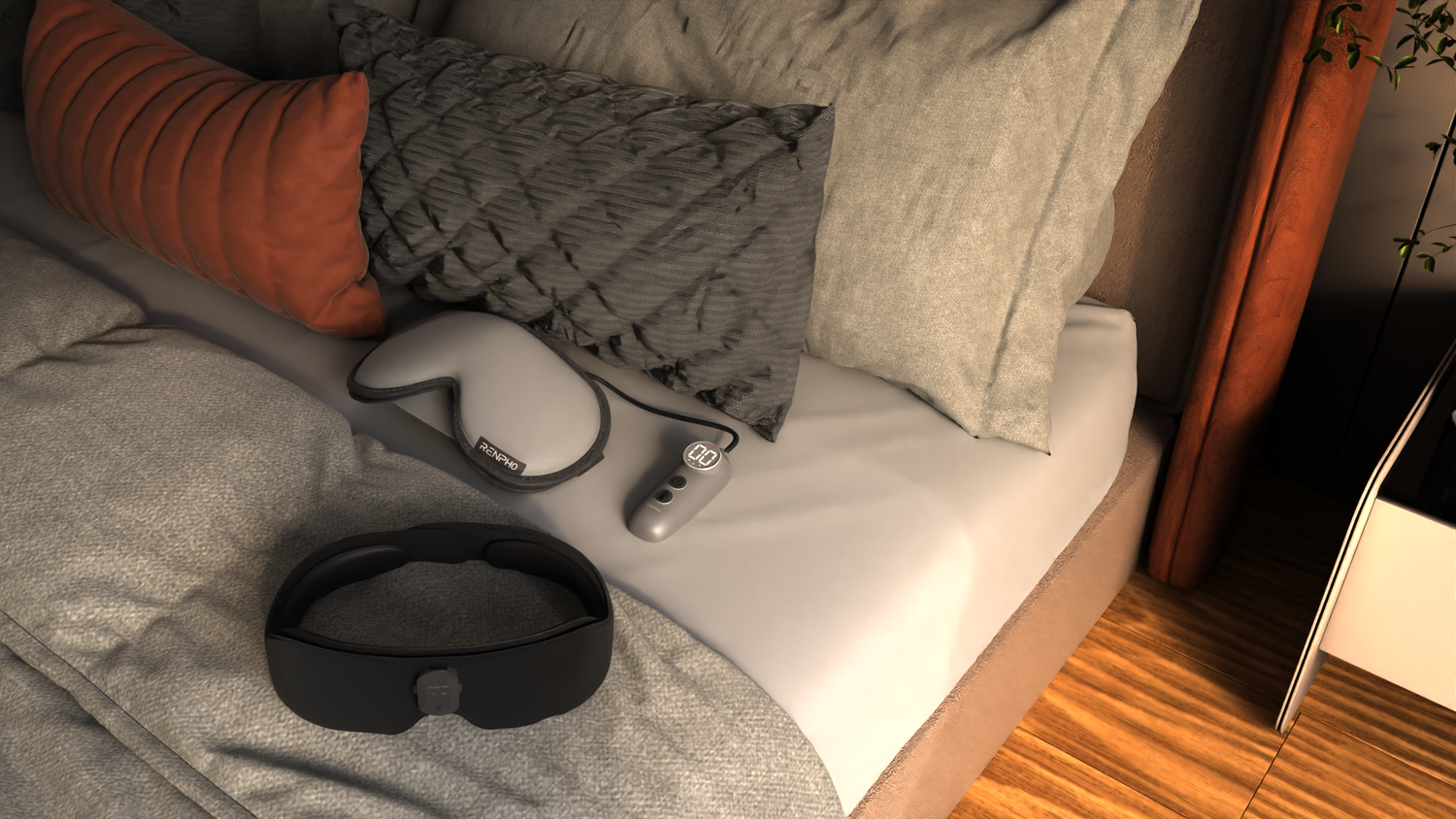DIY Sleep Solutions: How to Make a Sleep Mask for a Good Night's Sleep

Stay tuned to our latest news
A good night’s sleep is a crucial element in achieving a healthy and fulfilling life. It is not just a luxury or a time of rest; it is a vital process that rejuvenates our bodies and minds, allowing us to thrive during our waking hours. Yet, in today's fast-paced and demanding world, achieving quality sleep often feels like an elusive dream.
Fortunately, sleep masks are here to save your nights as they offer a simple yet effective solution to combat the obstacles that hinder our slumber. By blocking out light and creating a cocoon of tranquility, they facilitate faster sleep onset, prolonged sleep duration, and a refreshed awakening ready to conquer the day.
If you are looking to create DIY sleep masks, we will guide you through the process of creating your own one, tailored to your preferences and needs. You don't need to be a crafting expert; we'll provide easy-to-follow instructions and share creative tips to make your DIY project a success.
Why Is It Important to Have a Good Night's Sleep?

Quality sleep is crucial for overall physical and mental well-being. Physically, it plays a vital role in the body's healing and repair processes, helping to regulate hormones, support growth and development, and strengthen the immune system. Mentally, it is essential for cognitive function, memory consolidation, and emotional regulation.
On the other hand, poor sleep quality can lead to a range of health issues, including an increased risk of chronic conditions such as obesity, diabetes, and heart disease, as well as mood disorders like anxiety and depression. Sleep deprivation can also impair decision-making, concentration, and reaction times, posing potential risks in daily activities such as driving.
What Do You Need to Make a DIY Sleep Mask?

Since sleep has plenty of benefits to your overall health, using a sleep mask can be an invaluable tool. So, are you ready to create your own DIY sleep mask? With just a few simple materials and a little bit of creativity, you can make a luxurious and customized sleep mask that will have you snoozing in style.
What Are the Materials Needed to Make a Sleep Mask?
To make a sleep mask, you will need the following materials:
- Fabric: Choose a soft and comfortable fabric for the mask. Cotton, silk, satin, or fleece are all popular choices. You'll need two pieces of fabric, each measuring approximately 8 by 4 inches (20 by 10 cm).
- Elastic band: This will be used to secure the sleep mask around your head. Opt for a soft and stretchy elastic band, approximately 12 inches (30 cm) long.
- Thread: Select a thread color that complements your fabric. A strong thread that matches or contrasts nicely with your chosen fabric will work well.
- Scissors: Use a pair of sharp scissors to cut the fabric and elastic band.
- Sewing pins or clips: These will help hold the fabric together during the sewing process.
- Sewing machine or needle and thread: You can either use a sewing machine to stitch the pieces together or hand-sew using a needle and thread.
If you want to add a personal touch to your sleep mask, you can consider adding decorative elements like lace trim, sequins, or embroidery. These are optional but can enhance the aesthetic appeal of your mask.
What Are Some Things to Consider When Making a DIY Sleep Mask?
When it comes to creating your own DIY sleep mask, there are several important considerations to keep in mind. Designing a sleep mask that meets your specific needs and preferences requires thoughtful attention to detail. From the choice of fabric to the overall construction, every aspect contributes to the comfort and effectiveness of the mask. Here are some things to keep in mind:
- Comfort
- Light-blocking
- Fit and Coverage
- Breathability
- Adjustable Strap
- Washability
Additionally, don't be afraid to add your personal touch to the sleep mask. Consider embellishments, decorations, or embroidery to make it uniquely yours. Just ensure that no additions interfere with the comfort and functionality of the mask.
How to Make a DIY Sleep Mask?

Are you tired of being woken up by the sunlight in the morning or having trouble sleeping due to light exposure? Making your own DIY sleep mask is an easy and cost-effective solution to help improve your sleep quality. Follow these simple steps to make your own DIY sleep mask and start getting the peaceful sleep you deserve.
-
Choosing a Sleep Mask Pattern
When choosing a sleep mask pattern, consider using a design program like Photoshop to personalize the masks, allowing you to incorporate specific phrases or designs that hold meaning for you. Keep in mind the importance of complete darkness for a good night's sleep and ensure that the chosen pattern and fabric effectively block out light. Take personal preferences into account, whether it's a simple solid color or a fun, whimsical design. By using a design program, you can easily customize the sleep mask pattern to suit your taste and style. Whether it's a calming, neutral pattern or a bold, bright design, the chosen pattern should reflect your personal preferences for both comfort and aesthetics.
-
Measuring and Cutting the Fabric
To measure and cut the fabric for the mask, start by laying the main fabric flat on a clean, flat surface. Then, using a measuring tape, measure and mark the dimensions of the pattern onto the fabric using a fabric marker. Cut out 2 pieces of fabric according to the traced pattern.
Apart from the main pieces, cut a fabric strip that measures 30 inches in length and 1 3/4 inches in width from the main fabric. This will be used as the mask strap to secure the mask in place.
Ensure accuracy when measuring and cutting the fabric to ensure the mask fits properly and comfortably. Use sharp scissors to make clean cuts and follow the traced pattern precisely.
By measuring, marking, and cutting the fabric carefully, you will have the necessary pieces to assemble the mask according to the pattern.
-
Adding Seam Allowance and Marking the Fabric
To add seam allowance and mark the fabric according to the pattern, start by laying the main fabric flat and placing the pattern on top. Using a fabric marker, carefully trace the pattern onto the fabric, ensuring it does not shift or distort. Add the required seam allowance around the traced pattern, typically 1/4 to 1/2 inch. Cut out the fabric pieces along the new lines with the added seam allowance.
For the fabric strip for the mask strap, measure and mark the desired length and width according to the pattern. Then, carefully cut out the fabric strip. By following these steps, you will ensure that the fabric is accurately marked and cut to match the pattern, and that the seam allowance is added for stitching. This approach will help to create a well-fitting and accurately constructed garment or project.
-
Cutting Out the Fabric Pieces
To craft the fabric pieces for the mask, start by selecting the desired fabric and laying it flat on a clean, smooth surface. Pin the mask pattern onto the fabric, making sure the pattern is securely in place. Using a fabric marker, carefully trace the pattern onto the fabric, ensuring that all the details and lines are accurately transferred.
Next, carefully cut out the traced pieces of fabric to create two identical pieces for the front and back of the mask. Make sure to cut along the traced lines precisely to ensure a perfect fit for the mask.
In addition to the mask pieces, cut a fabric strip measuring 30 x 1 3/4 inches from the main fabric. This fabric strip will be used as the mask strap to secure the mask in place. Double-check the measurements and ensure that the fabric strip is cut straight and even for a comfortable and secure fit.
-
Sewing the Elastic Band
To sew the elastic band onto the fabric tube, you will need a bodkin or a safety pin to thread the elastic through the fabric tube. Once the elastic is threaded through, pin it in place on either side to keep it secure. Next, sew along each end of the elastic to ensure it stays in place and does not shift when the fabric tube is in use.
Using a bodkin or a safety pin to thread the elastic through the fabric tube will make the process easier and more precise. Once the elastic is in place, ensure stability by sewing along both ends.
This sewing technique creates a durable and reliable finish. Take your time and sew carefully to ensure the elastic stays in place and provides the right amount of stretch for the fabric tube.
By following these steps and including keywords such as sewing, elastic band, fabric tube, bodkin, and safety pin, you can create a secure and stable elastic band on your fabric tube for all your sewing projects.
-
Attaching the Elastic Band to the Fabric
To attach the elastic band to the fabric, start by laying the main fabric piece with the right side facing up. Place the elastic strap on top of the fabric, positioning it where you want it to be attached. Pin the elastic strap in place on either short side of the fabric piece to secure it. Then, stitch the elastic strap to the fabric, making sure it is well attached.
Next, take the 80cm long and 2cm wide elastic band and carefully thread it through the fabric tube using a bodkin or safety pin. Make sure to thread it all the way through so that both ends of the elastic are sticking out of the fabric tube. Once the elastic is in place, sew along each end of the fabric tube to secure the elastic band in place.
By following these steps, you can effectively attach the elastic band to the fabric, ensuring that it is securely in place and ready for use in your sewing project.
-
Sewing the Fabric Pieces Together
To sew the main fabric pieces together, start by placing the two pieces with their right sides facing each other. Use a straight stitch along the edges, leaving a small opening of about 1.5 inches to turn the mask inside out. Backstitch at the beginning and end of the seam for extra security.
Next, take the fabric strip and fold it in half lengthwise with the wrong sides facing in. Position the strip at the corners of the mask, ensuring it is aligned evenly on both sides. Sew the strip in place securely with a straight stitch, backstitching at the beginning and end to reinforce the attachment.
After attaching the fabric strip, trim any excess fabric and clip the corners to reduce bulk. Finally, reinforce the stitches along the edges and the mask strap to ensure durability. Turn the mask inside out through the small opening, pushing out the corners, and press it flat for a polished finish.
By following these steps and using the keywords like sewing, main fabric, straight stitch, mask strap, and reinforce, you can create a well-constructed and secure fabric mask.
Takeaway
A good night's sleep is crucial for our well-being. Fortunately, sleep masks can help improve sleep quality by blocking out light and creating a peaceful environment.
But if you don’t have a sleep mask at home, making a DIY is simple and doesn't require advanced crafting skills. All you'll need is fabric, an elastic band, thread, scissors, sewing pins, and a sewing machine or needle and thread. Consider factors like comfort, light-blocking, fit, breathability, adjustable straps, and washability when making your mask. Personalize it with lace trim, sequins, or embroidery, as long as it doesn't compromise functionality. Cut the fabric according to the pattern, sew the elastic band onto the fabric tube, attach it to the main fabric piece, and sew the pieces together. Turn the mask inside out, press it flat, and enjoy your very own DIY sleep mask.
Renpho Health Tips
-

Holistic Wellness: How to Achieve Balance and Harmony in Your Body, Mind, and Spirit
February 8, 2024
Read more >
-

Unpacking PCD: Navigating the Aftermath of a Great Show
February 5, 2024
Read more >
-

The Science of Beauty Sleep: Understanding the Purpose of Sleeping Masks
February 5, 2024
Read more >
-

The Art of Self-Care: How Social Media Inspires Eye Wellness
February 4, 2024
Read more >
-

How to Pamper Yourself Without Breaking the Bank: 7 Self-Care Tips for Budget-Conscious People
February 4, 2024
Read more >





